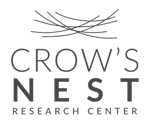Research
Current Research and Educational Grants
Virginia Institute of Marine Science (VIMS) conducts tidal watershed monitoring onsite at the CNRC that feeds data into the StormSense network of tidal monitoring which is used to predict storm surge. Read an interview with the lead researcher for this project, Dr. J. D. Loftis, Assistant Research Scientist, here. EP Interview of Derek Loftis_SEPT 18 2020
University of Mary Washington Professors A. Tomba and T. Frankel in the Biological Sciences and the Earth and Environmental Sciences departments, respectively, lead student researchers in data collection and analysis of dissolved oxygen levels, and the presence of pollutants and microplastics in the Accokeek Creek waters at the CNRC. Read an interview with Professor Frankel here.
Independent researcher E. Panner, in conjunction with the U.S. Geological Survey’s Native Bee Lab, and a project assistant, P. Smith, leads warm weather research on the presence and inventory of native bee populations at the CNRC. E. Panner answers some questions here about her field research here.
Virginia’s Department of Conservation and Recreation continues its annual Breeding Bird Survey with data collection (since spring 2018 at the CNRC)using point count methodology to 1) determine annual changes and long term trends in bird species composition and relative abundance, and 2) improve our understanding of the relationship between breeding birds, habitats, and land management. Open the summary of the Breeding Bird Survey here, and please note that not all birds detected at the CNRC actually breed there; some birds breed nearby but forage and hang out at the CNRC.
The Chesapeake Bay Trust sponsors a series of onsite workshops and virtual sessions offering professional development for local PK – 12 grade educators to learn new, nature-based skills and strategies for teaching about the Chesapeake Bay watershed. Over 20 educators from Fredericksburg City Schools, the Fredericksburg Academy, and Spotsylvania and Stafford County schools will participate. Click here to learn about this grant program.
Potential Environmental Research Projects
- Create an inventory of plants in the Tidal Shrublands that would be supported by quantitative data.
- Create an inventory of plants in the Freshwater Tidal Marsh.
- Produce a comparative study of soil carbon capture rates among different habitats present, especially meadow soils versus woodland soils versus freshwater tidal marsh.
- Conduct a multi-year hydrology study to assess changing water tables.
- Document the snakehead fish life cycle in Accokeek Creek.
- Document the presence, annual life cycle, and eco-threat of the invasive and fast-growing Hydrilla verticillata in Accokeek Creek.
- Assess presence of endocrine-disrupting chemicals in Accokeek Creek.

